Climate change is accelerating — and the economic fallout is already here. Economist Michael Penn joins us to unpack the rising cost of disasters, the $4,500 carbon question, and what climate tipping points mean for growth, inflation, and global stability.
Summary – IBKR Podcasts Ep. 240
The following is a summary of a live audio recording and may contain errors in spelling or grammar. Although IBKR has edited for clarity no material changes have been made.
Jose Torres
Hello everyone, and welcome to this edition of Interactive Brokers’ IBKR podcasts. I’m Jose Torres, your senior economist. With me today is a special guest, Mr. Michael Penn. He is the Head of Climate Macro Strategy at Absolute Strategy Research. Prior to his time at ASR, he was the Chief Economist and Strategist at Cohen & Steers.
Prior to that, he held related positions at Bank of America Merrill Lynch. We’re excited to have Michael Penn here today to talk about some climate trends, as well as some forecasts and ASR’s proprietary research on climate change. Michael, welcome.
Michael Penn
Yeah, thanks very much, Jose. Thanks for having me.
Jose Torres
Absolutely, it’s great to have you. And let’s dive right in. Climate change has been a huge topic in the past few decades. On one side, we have activists that think we need imminent change in lifestyle and government expenditures to accommodate the changing landscape.
And then you have, on the other hand, climate deniers that think that climate change is a trend that’s going to come and go. They point to the natural ebbs and flows of historical temperatures as a justification for climate change and don’t think that much change is needed imminently.
Michael, can you start with an overview regarding anticipated changes in climate and current goals to minimize the extent of temperature increases?
Michael Penn
Yeah, sure. Look, why don’t we start with where we are today? So the global average temperature is around 1.4–1.5 degrees Celsius—that’s about 2.7 degrees Fahrenheit above the preindustrial level.
So when climate scientists talk about global warming, what they do is they say, okay, what was the average temperature up to the year 1900? And then let’s record temperatures as they’re increasing post the 1900 period. So we’re already at 1.4–1.5 degrees Celsius—2.7 degrees Fahrenheit above that sort of what we call preindustrial level, and temperatures are rising at a pretty rapid pace.
Now, you might think 1.4, 1.5 degrees—or 3 degrees Fahrenheit—what’s the big deal? But climate scientists tend to think that if temperatures move from around 1.5 degrees into the kind of 2 degrees Celsius zone, then we’re going to start to see a significant move up in the severity and the frequency of extreme weather events.
So we’re talking about more intense hurricanes, maybe longer-lasting heatwaves, more devastating floods—real kind of damage to the economy and to communities.
And as we move into that bad threshold—1.5 to 2 degrees Celsius—we’re at risk of triggering what scientists call “climate tipping points.” Now, these are thresholds which, once you cross them, lead to major changes in the climate system. So a couple of examples:
Yeah, two degrees—the evidence seems to suggest that maybe one to one and a half billion more people will be exposed to extreme heatwaves than would be the case at 1.5 degrees of warming. So that’s like the entire population of India facing potentially sort of life-threatening levels of heat.
And at two degrees of warming, we’d see twice as many plant species lost relative to what would have happened at 1.5 degrees. For insects—which, of course, play a crucial role in our ecosystems and as we think about food production—the loss of insect life would be about three times worse.
So, we’re really looking to limit any further increase in warming caused by man-made greenhouse gas emissions and to stay as close as possible to that kind of 1.5-degree target.
Now, the Paris Climate Agreement that was signed in 2015—and the U.S. has recently withdrawn from that agreement—but the Paris Agreement set out some of the toughest climate targets that we’ve ever seen. And the aim was to limit warming to well below 2 degrees.
Now, if you look at where governments are right now and you look at what governments have pledged, that’s consistent with maybe 2.1 degrees of warming.
But if you look at the policies that are actually signed into law—so what governments have actually committed to do—we’re well short. We’re more on target for about 2.7 to 2.8 degrees of warming. So, there are some critical thresholds coming, and we’ve got a long way to go to get close to some of those pledges.
Jose Torres
And Michael, to get closer to those pledges, what do you think the economic impact will be? Do you think it’s more of a growth deceleration or more of an inflationary uptick?
Michael Penn
Yeah, I guess climate is first and foremost an environmental issue, but of course, it’s an economic one too. And you’re right, there is both a kind of a growth impact and an inflation impact.
Even forgetting the projections, we look at what’s happened over the last couple of years—the numbers are pretty staggering. Last year alone, climate and extreme weather caused about $320 billion of losses globally. Those numbers come from various global insurance companies.
$320 billion of losses—and that’s about 30 percent higher than we saw the previous year, in 2023.
And in the U.S. last year, climate events caused about $150 billion of damages, and that’s around two and a half times higher than we saw even a decade earlier. So we’re already seeing a lot of these impacts come through in terms of the impact on GDP.
And I think if we carry on this path, the impact on the U.S. could be, let’s say, knocking about 3 percent off GDP per year in 15 to 20 years. And the impact on Asia and Africa—where I think most of the climate damage is expected to be—could be significant. We could be talking about slashing growth by around a third or more.
You mentioned inflation—that’s the other kind of big impact. So extreme weather events—heatwaves, droughts, floods—big disruption on global food supply chains. And if these shocks continue, they could start to drive inflation rates much higher.
So if we’re used to seeing inflation globally of about 2 percent per year, we could be looking at in excess of 3 percent inflation, maybe even 3.5 percent inflation over the next 10 to 15 years. And of course, that will have a big impact on household spending—on budgets—given that households put a lot of money aside for staples like food.
Jose Torres
So from a consumer perspective—you mentioned the budgetary situation—how do you feel about lifestyles… I’m repeating that.
From a consumer perspective, since we’re talking a little bit about household budgets here, are lifestyles required to change significantly to achieve the net-zero goal?
How about for corporates and governments? Must they make drastic changes for net-zero?
Michael Penn
Yeah, that’s a great question. So look, pollution is often referred to by economists as an externality. That means that when we engage in activities like driving a car or flying, we create pollution—and that imposes costs on the planet that aren’t reflected in the prices that we pay for those goods and services.
Now, some of those costs are obvious, like driving a car or flying on a plane, but there are lots of hidden sources as well. If you think about the carbon that’s embedded in transporting the food to the grocery store, and then you buy the produce there—or the coal that’s used to create steel that is then used for the buildings that we live or work in.
So, carbon is embedded in everything that we consume. And I think really, if we want to change that—if we want to really think about change—then we need to start thinking about putting a price on those carbon emissions, inserting a carbon price.
Right now, we’re getting something for free, which is: we’re polluting and using nature for free. And we can’t continue to ignore those costs if we want to start to bring…
As soon as you put a price on carbon, you start to incentivize change. Consumers are suddenly saying, “Hold on, now I’m having to pay more for my goods and services. Maybe I should look for cleaner alternatives.”
But it’s expensive. If you want to put a carbon price on at a level which really incentivizes getting toward our climate targets, estimates suggest that could be about $4,500 extra per household. That’s a tough sell to the public.
If I’m a politician saying, “Sorry, look, you had something for free. Now you’re going to have to pay $4,500 a year for no perceivable benefit.”
So, you know, governments really need to be looking at a much more gradual approach to something like carbon pricing. And there has been success there—the European Union has gradually increased their carbon price. Carbon pricing is something that’s building globally.
Yes, we do need drastic change. I think we do need to put a price on the carbon—the pollution that we produce—but it’s a very difficult and delicate balancing act for policymakers.
Jose Torres
Michael, $4,500 per year per household could be doable in some of the wealthier countries and the more developed nations, but that number really does point to climate change being a global phenomenon and needing cooperation from some of the emerging countries and some of the nations that are suffering from increased poverty levels.
How do we reconcile that? How do we make some of the less fortunate nations be able to cooperate with some of these ambitious goals?
Michael Penn
Yeah, it’s a great question. And you’re right—look, these are countries that are growing much more quickly. They have a rising, growing middle class; they’re urbanizing. And with that comes a lot of demand for energy.
And when you demand energy, all else equal, that means there’s a requirement to burn fossil fuels. And in a lot of these countries, fossil fuels are much cheaper to deploy than renewables, and they can produce kind of baseload, consistent, reliable energy that sometimes is not possible with intermittent wind or solar—which, when the sun doesn’t shine or the wind doesn’t blow, can produce much more volatile streams of energy.
I have a lot of sympathy that these countries are being put under pressure to bring their emissions down at a time when they’re growing very quickly and there’s great demand for increased energy and burning of fossil fuels.
I think there’s a couple of issues here. One is that a lot of these emerging markets are in the direct firing line of some of the worst physical impacts of climate change—particularly if we think about Asia and Africa. And that is going to stretch their budgets. So, spending on things like disaster recovery, spending money on building resilience—it’s all very expensive.
And so I think a very forward-looking government there would say, “I’d rather spend the money on building out clean energy now, rather than having to build out more in terms of flood protection and early-warning disaster systems in 20 or 30 years’ time.”
But you’re right, and I agree, that if you want to try and incentivize these countries, there probably does need to be more in the way of climate finance. So this is transfers of money from the developed countries to emerging economies.
But there’s a problem there. It’s not like budgets are not stretched in the U.S., in Europe, and in other developed economies. So you’re asking people not just to pay the $4,500 a year, but—oh, by the way—we need to transfer yet more money to the Global South to help them with their clean energy rollout. It’s a very tough ask.
These are some big challenges, and they require governments to be thinking decades ahead—not just over the next couple of years. And that’s a very tough challenge, especially in this current sort of political mood.
Jose Torres
And the political environment in the last few centuries or so, where folks think about the next four years necessarily—or the next eight years—they’re not really thinking decades out in terms of medium- and long-term goals. A lot of times, because reelection considerations aren’t consistent with that timeline.
Now, Africa and Asia, like you said, Michael, are more exposed to climate change risk, but here in the U.S., we’ve seen some significant hurricanes in the Southeast, we’ve seen wildfires, we’ve seen the cost of living increase for many factors—but one of the factors has also been insurance premiums.
How do you… how would you… how do you see how the U.S. is handling the climate change dynamics and disaster recovery, as well as insurance premiums?
Michael Penn
Sure. So look, you’re right. On a global level, the U.S. is actually quite well positioned—certainly relative to Africa and some areas of Southeast Asia.
But of course, it’s not just a story of the country. It’s the kind of states, it’s the counties within. We’ve seen just from the wildfires in California or hurricanes and climate-related events in Florida that the U.S. is almost like a continent. And within that, you have lots of different states, which are like individual countries that all have their own exposures to climate risk.
And probably the best side of that is through the increase in insurance premiums. Now, understandably, for the riskiest properties, you have seen insurance premiums rise. And some of those riskiest properties have been in the direct firing line of some of the issues that you’ve mentioned.
I guess the safest insurance policies have remained roughly unchanged as we think about the premiums that are paid over the last two or three years.
I think if you were to split properties into five different groups, you’d say the bottom—the sort of safest 20%—the average annual premium is, I think, just over $2,000 a year. But if you look at the riskiest properties—the top sort of 20% of properties—you’ve seen big increases.
Michael Penn
The average premium is now about $3,500 a year. That’s about a 20 percent jump just in the last couple of years. On the one hand, I think you’d say the market is working—insurance premiums are rising, and the market is giving the correct signals.
But there’s a broader issue here with the way that subsidies work. So, when insurers pull out of certain states—and we’ve seen some insurers pull out of insuring properties in California, which is probably the best and most public example of that—when insurers pull out, that really should be a sign that the market is saying, “Look, there’s a risk that needs to be priced here.”
And the problem is that when local governments step in, that’s breaking the link between the market and the climate signal. And so what you’re doing is, ultimately, you’re putting the strain—you’re moving it from the insurer to the government, and then ultimately to the taxpayer.
So, even if I’m in a kind of low-risk property, my costs are still going up because I’m now having to pay more tax to cover the local government that has had to step in. I still think there are lots of issues with the way that the insurance market is operating in the States in terms of giving those kinds of climate risk signals.
Jose Torres
Yeah, in Florida, where I’m at here today, many insurance providers as well have also left, and the only one remaining for a lot of new policyholders is one that’s subsidized by the state. And now the state, Michael, is talking about possibly removing property taxes. That’s going to be interesting from a municipal finance perspective, I think.
Michael Penn
Yeah, absolutely. And I think this is exactly it. You’re just socializing the climate risk—you’re taking it from the private insurer to the state, or even to the federal level. And everyone’s going to end up paying for that.
Jose Torres
And Michael, the way real estate values in the United States have trended—the gateway cities happen to be on the coasts. Climate change presumably means that’s elevated risk. So that’s going to be interesting when you consider New York, Philadelphia, Washington, Miami, Los Angeles, San Francisco.
What can local governments do? We hear a lot about enforcing stronger building restrictions. We hear sometimes about sea walls and dams.
What are some things you can do—maybe some other, modern measures that some of these local governments can do—that perhaps some of the more emerging countries can also begin to emulate and maybe fortify their geographies against climate change?
Or are the forces of climate change so significant that the measures of the local governments won’t be able to match up?
Michael Penn
Yeah. I’d say the first one is to let the market signals operate as they should. Stepping in—if an insurance company does not want to insure an oceanfront property—that’s telling you that there’s a problem. And no one has as good data on flood risk, on wildfire risk, as the insurance companies.
So I think the first thing is to let the insurance market and the pricing from insurance do the job that it’s supposed to.
But outside of that, I agree—it’s things like flood defenses, early warning systems. Obviously, the U.S. is very far advanced in a lot of these technologies, certainly relative to a lot of emerging markets. So, to some extent, you can try and address some of these issues.
But there are lots of other things that it’s very difficult for governments to necessarily step in on. Probably the best example I can think of—something outside of U.S. control—is what happened with the Panama Canal last year.
So, we saw Panama have one of the worst droughts in a century. That meant that water levels were very low. The Panama Canal fell to record low levels. And of course, the Panama Canal is very important for the U.S., very important for trade. I think it’s responsible for something like 6 percent of all global trade.
Now, that’s upstream from the U.S., so there’s only a limit to the amount that, let’s say, a government or a local government can do when it’s downstream to some of these supply chain issues. Sometimes you’re really at the mercy of what other governments are doing, or at the mercy of the physical climate risk.
Jose Torres
Which economic sectors do you think are going to benefit from climate change, and which ones will be most adversely impacted?
Off the top of my head, I’d imagine that fossil fuels and traditional energy production would probably be less buoyant in the next 30 to 50 years, and energy efficiency and modernized energy—I’d imagine that would be more robust. What do you think?
Michael Penn
Yeah, it’s a great question. I think the first thing to do is to separate—
You’ve got two elements of climate change here, right? You’ve got the physical risk elements of climate change, and then you have anything to do with the energy transition. So it’s really important to separate both winners and losers as you think about those two elements.
So when it comes to the physical side of climate change—we’ve talked about it a lot—but I think real estate is probably the most obvious sector that’s in the direct firing line: extreme weather events, insurance costs as we discussed.
There are also beneficiaries of rising physical climate risk. So if you think about investing in sectors like water, agricultural technology—these are companies that are developing some really interesting solutions to address issues like water scarcity or food security. A great example is something like vertical farming, or bioengineering when it comes to crops, to make them more drought-resistant.
So those are some of the industries that could actually benefit from more physical climate risk.
And then you have the second element—anything to do with the energy transition. So, some of the sectors that you mentioned.
Now, if you believe that we’re going to face a very quick transition and we’re going to reach some of our net-zero targets, then yes, you would want to sell out of oil, gas, fossil fuel companies.
But certainly, if you look at the way that the transition is unfolding, and a lot of governments are maybe taking a step back from transitioning away from fossil fuels, there’d certainly be an argument to say,
“I’m skeptical that this transition is happening at the speed that I would like, so I’m quite happy to remain invested in oil and gas companies for the time being. I’m skeptical on solar, wind, or electric vehicles.”
Now, of course, I mentioned the carbon price. A carbon price would be a real game-changer here, because suddenly, if you’re a consumer and you’re looking for ways to bring your cost down, you’re looking for clean alternatives.
So suddenly, things like solar and wind or an electric vehicle look a lot more competitive than their fossil fuel equivalents. But I think without putting a price on carbon, the fossil fuel provision of energy is going to be around for a long time to come.
Jose Torres
Thanks so much for joining me today. Michael Penn is the Head of Climate Strategy at Absolute Strategy Research (ASR).
And Michael, you’re a really interesting guest because you bring a lot of climate knowledge with a past in Wall Street economist kind of experience—and that’s a really impressive bridge to cross.
Folks, you all could probably tell—I am not a climate expert. Michael is. And it’s really great to be able to have you here, Michael, and bring that Wall Street experience that, here at Interactive Brokers, we listen to all the time—we’re familiar with.
But today, you really brought the climate aspect, which is a new development that we’re trying to bring into the Forecast Trader and Traders’ Insight and Traders’ Academy, and all the products that we have here.
So Michael, thanks a lot for your time today.
Folks, don’t forget to like and subscribe—IBKR Interactive Brokers Podcasts—wherever you listen and digest these podcast episodes.
Thanks so much for joining us, and we look forward to seeing you on the next episode. Thank you.
Join The Conversation
For specific platform feedback and suggestions, please submit it directly to our team using these instructions.
If you have an account-specific question or concern, please reach out to Client Services.
We encourage you to look through our FAQs before posting. Your question may already be covered!
Leave a Reply
Disclosure: Interactive Brokers
The analysis in this material is provided for information only and is not and should not be construed as an offer to sell or the solicitation of an offer to buy any security. To the extent that this material discusses general market activity, industry or sector trends or other broad-based economic or political conditions, it should not be construed as research or investment advice. To the extent that it includes references to specific securities, commodities, currencies, or other instruments, those references do not constitute a recommendation by IBKR to buy, sell or hold such investments. This material does not and is not intended to take into account the particular financial conditions, investment objectives or requirements of individual customers. Before acting on this material, you should consider whether it is suitable for your particular circumstances and, as necessary, seek professional advice.
The views and opinions expressed herein are those of the author and do not necessarily reflect the views of Interactive Brokers, its affiliates, or its employees.
Disclosure: ForecastEx
Interactive Brokers LLC is a CFTC-registered Futures Commission Merchant and a clearing member and affiliate of ForecastEx LLC (“ForecastEx”). ForecastEx is a CFTC-registered Designated Contract Market and Derivatives Clearing Organization. Interactive Brokers LLC provides access to ForecastEx forecast contracts for eligible customers. Interactive Brokers LLC does not make recommendations with respect to any products available on its platform, including those offered by ForecastEx.
Disclosure: Forecast Contracts
Forecast Contracts are only available to eligible clients of Interactive Brokers LLC, Interactive Brokers Hong Kong Limited, and Interactive Brokers Singapore Pte. Ltd.
Disclosure: ForecastEx Market Sentiment
Displayed outcome information is based on current market sentiment from ForecastEx LLC, an affiliate of IB LLC. Current market sentiment for contracts may be viewed at ForecastEx at https://forecasttrader.interactivebrokers.com/en/home.php. Note: Real-time market sentiment updates are only active during exchange open trading hours. Updates to current market sentiment for overnight activity will be reflected at the open on the next trading day. This information is not intended by IBKR as an opinion or likelihood of a potential outcome.
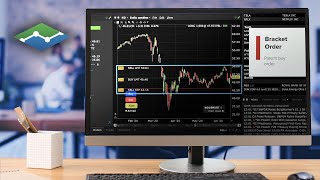

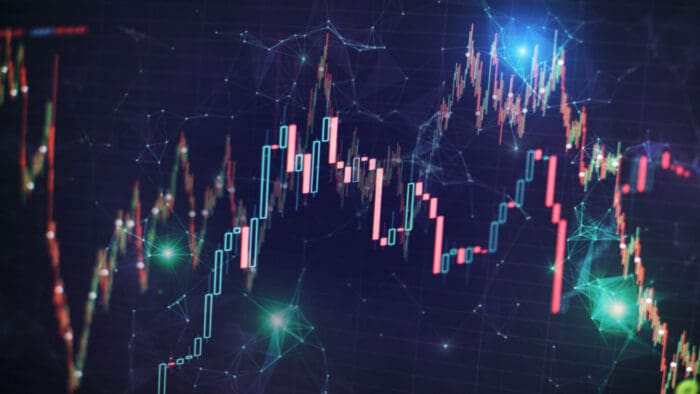

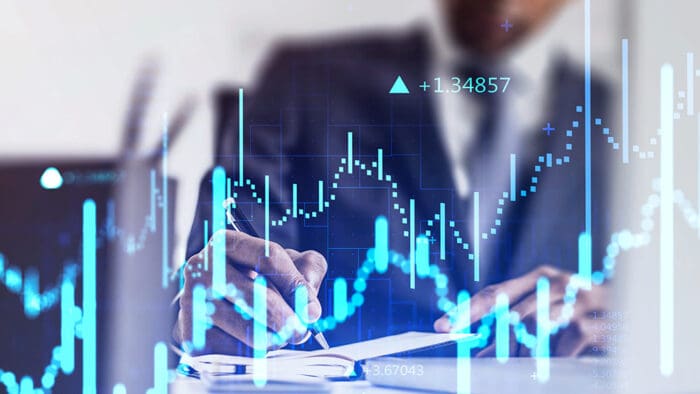

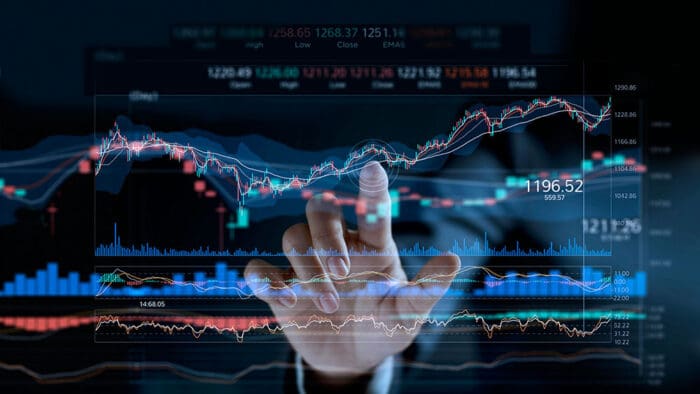

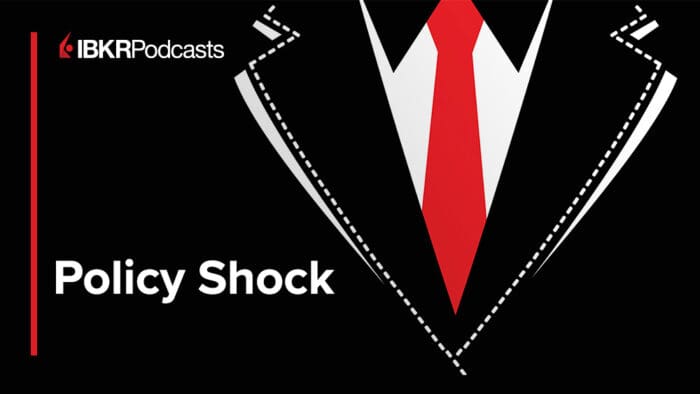




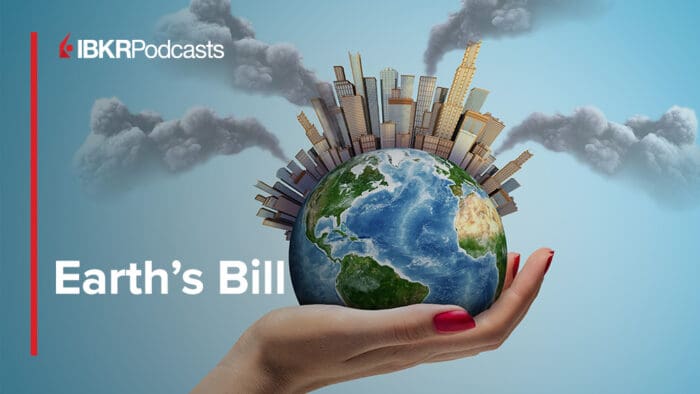



Here in British Columbia, the first carbon tax in North America was in introduced in 2008. It started out revenue-neutral, meaning that, for the consumer portion, money collected through the tax was distributed back to consumers equally. Heavy carbon users would pay more than the rebate but light carbon users would pay less in tax than they gained in that same rebate. The tax was removed today due to its unpopularity. It was no longer revenue-neutral, and people are less accepting of consumption taxes these days it seems …
Within its 4.5-billion-year history, planet Earth has experienced periods of lesser and greater warmth. Robust evidence only spans back 800,000 years Altering over many thousands of years, these shifting temperatures have been determined by variations in Earth’s orbit around the sun. While greater distances have resulted in colder cycles, shifts closer to the ball of heat have led to warmer, interglacial periods. The most distant period in time for which we have estimated CO2 levels is around the Ordovician period, 500 million years ago. At the time, atmospheric CO2 concentration was at a whopping 3000 to 9000 ppm! The average temperature wasn’t much more than 10 degrees C above today’s, and those of you who have heard of the runaway hothouse Earth scenario may wonder why it didn’t happen then If all the existing climate pledges are achieved, they won’t be enough to reduce global energy-related CO2 emissions to net zero by 2050. Which means limiting the global temperature rise to 1.5C could be impossible. Getting to net-zero could mean the loss of 187 million jobs globally by 2050. Spending on physical assets on the course to net-zero would reach about US$275 trillion by 2050, or US$9.2 trillion per year on average, an annual increase of US$3.5 trillion. To put it in comparable terms, the US$3.5 trillion increase is equivalent to about half of global corporate profits, one-quarter of total tax revenue, and 7 percent of household spending